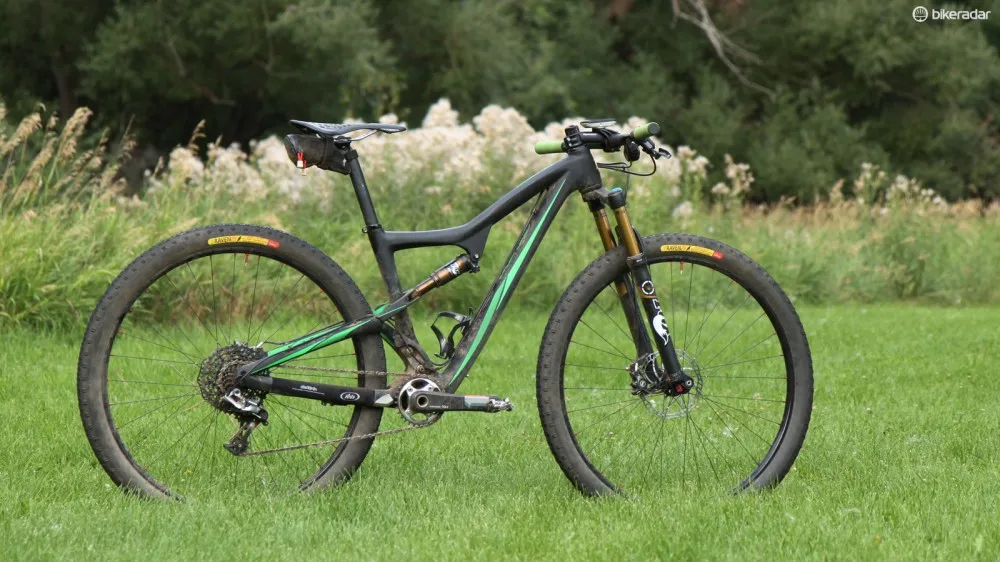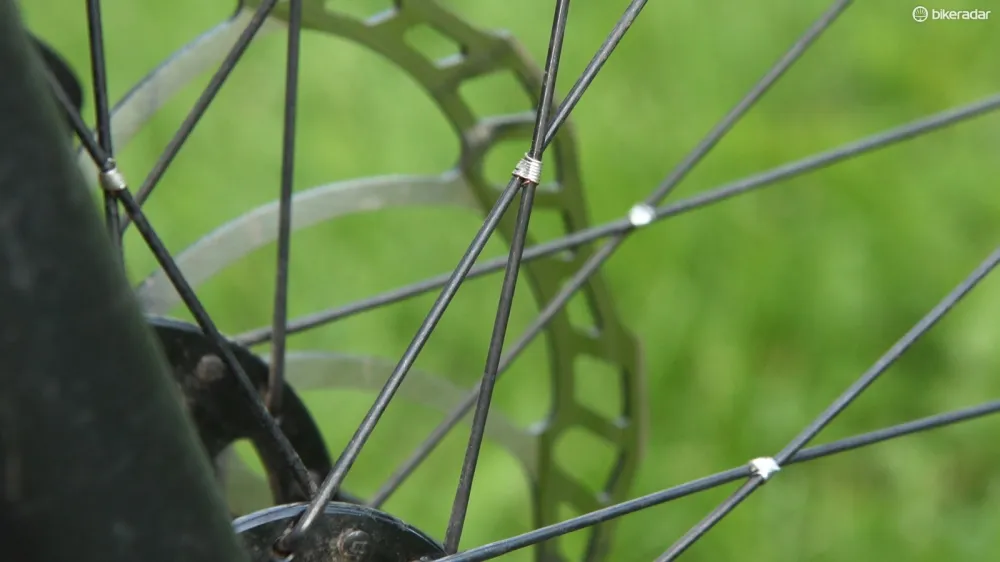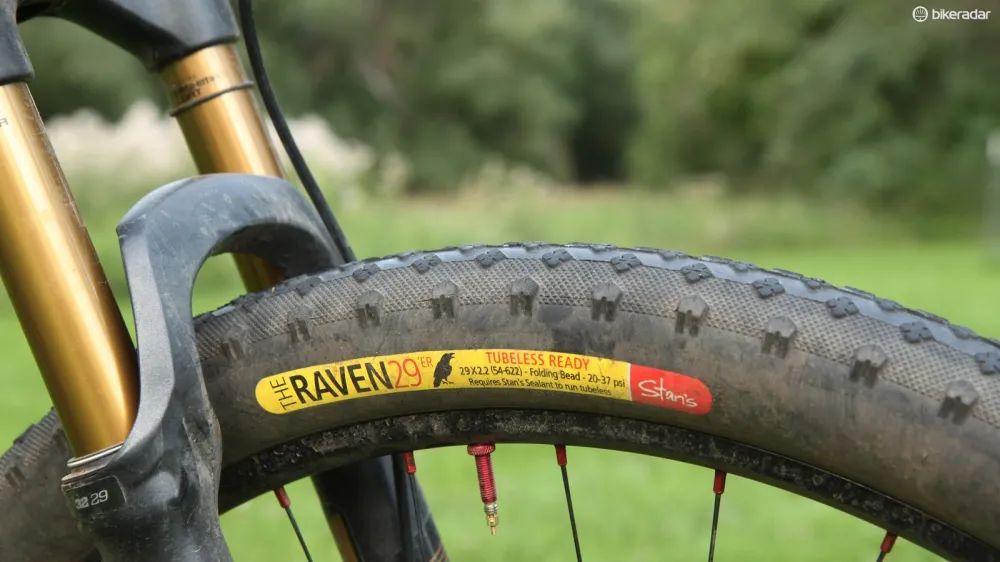I've raced the Laramie Enduro twice in the past and when a friend asked me to ride it with him this year, I knew what I was up against – 6-7 hours in the saddle with more than 2,100m (7,000ft) of climbing on a mix of dirt roads and super fun singletrack, all above 2,300m (7,500ft) in elevation. The main difference this time around, though, was that I had a 10-month-old baby girl at home and a wife who had recently decided to go back to school. Needless to say, consistent training time has proven elusive. Nor did I have what I felt was an appropriate bike to use that day.
- The course: The Laramie Enduro, a mountain bike endurance race near Laramie, Wyoming. 111km/69mi in length with more than 2,100m/7,000ft of climbing, held over a mix of dirt roads and modestly technical singletrack
- The equipment goal: A lightweight but efficient full-suspension 29er with fast-rolling wheels and tyres, room for a water bottle, and enough comfort for 6-7 hours in the saddle
- The horse: A custom-built Ibis Ripley
A friend over at PinkBike recently penned a column called, 'Cater to Your Weaknesses', where he opines that equipment selections should be made so as to make up for our deficiencies wherever possible, as opposed to capitalizing on our strengths as is more common. I consider myself a pretty decent rider when it comes to technical stuff but I knew all too well where I was lacking – fitness – so I was after every bit of help I could get.

When faced with this sort of course profile for a 111km-long mountain bike race, what sort of bike would you choose?
All of that climbing and the long stretches of dirt road dictated something lightweight, efficient and fast rolling – perhaps a hardtail? But then again, the countless sections of fun, quick and moderately twisty singletrack – not to mention the long day – called for something more entertaining and forgiving. Durability was still a concern, though, as the only thing harder than riding 111km is having to walk part of that distance.
From past experience, there was one obvious place to start: an Ibis Ripley. When I reviewed it last year, I found its dw-link rear end to be incredibly efficient to pedal yet it still packed 120mm of highly active travel to suck up the bumps. All of that was built into a chassis that weighs less than 2.5kg (5.5lb) and has the sort of neutral handling I was looking for. I'd been pining for one ever since I sent it back and was finally able to get one for myself just recently – and after a little work with a Dremel tool, a 5mm rivnut, and some leftover housing clamps from an old Scott Spark, the cable routing was how I wanted it, too.

My bike of choice for the Laramie Enduro was a custom-built Ibis Ripley
I mated that frame with a new Fox 32 Float 120 29 FIT w/ CTD Adjust fork that had just come in for test, a pair of trusty old Shimano XTR pedals, and a SRAM XX1/XO1 drivetrain I had left over from another bike I had bought a few months prior (conservatively geared with a 30T chainring). To keep the front end suitably low, I purchased an Enve SWP 740mm-wide flat carbon bar and a Syntace FlatForce stem (the latter off of eBay, so for the long-term sake of my teeth it hopefully isn't counterfeit).
To satisfy my inner weight weenie, I then bought a set of fresh Stan's NoTubes ZTR Race Gold 29er wheels (sub-1,400g!), bolted up a set of Magura MT8 disc brakes, slid on a pair of feathery-yet-cushy ESI foam grips, and mounted up a pair of sketchy-looking 2.2in-wide NoTubes Raven tyres that I'd avoided trying for the better part of five years (tubeless, of course). Capping things off was a lightweight Ritchey WCS Trail carbon fiber seatpost and a Tioga Spyder Stratum saddle that looked positively scary but based on earlier testing, promised to actually be suitably comfortable for a long day.

120mm of efficient and cushy dw-link suspension, a SRAM 1x11 drivetrain, bombproof Shimano XTR pedals, feathery Stan's NoTubes ZTR Race Gold 29er wheels - yum
As I wasn't planning on wearing a pack that day (there are five well-stocked aid stations along the route), I stuffed the steerer tube with a Specialized Top Cap Chain Tool, packed flat provisions inside a small saddle bag, and mounted a Lezyne side-mounted bottle cage on the down tube. A second bottle would go in a jersey pocket, flanked by a minimal rain jacket, several single-serve packs of Skratch drink mix, and as many of Allen Lim's signature rice cakes as I could fit.
Total bike weight as I hit the start line was 11.11kg (24.49lb, without bottle). For the sake of comparison, the weight without pedals or accessories was 10.08kg (22.22lb) – not bad at all for a race bike, I'd say, let alone one that I'd actually ride on a day-to-day basis.
So how'd it go?
Well, I certainly had a fun day but let's just say the bike fared better than I did.
My riding time was almost identical to 2010 at 6:07 but my official time was 7:21 – nearly an hour longer than before. I could tell early on that it wasn't going to be my best day, ultimately deciding to take a more casual approach and hang out in each aid station until my buddy rolled in. Plus, each stop had an essentially unlimited supply of pretzel M&Ms on hand, and I'm a sucker for candy.
But I digress.
With almost no exceptions, the bike was everything I had hoped it would be. Just as I'd remembered it in 2013, the rear end of the Ripley was fantastically efficient so I didn't need to flick any levers or knobs while on course, preferring instead to leave the rear shock in its fully open setting. As the majority of climbing was also seated, I didn't bother moving the fork out of the fully open mode, either.

Both ends were equipped with three damper modes but I kept it in 'open' the whole time
I've used the NoTubes ZTR Race Gold 29er wheels before and wasn't worried about how they'd hold up – and their low weight was a boon on the climbs. Somewhat amazingly given their appearance, the tyres actually performed better than I thought. Thanks to the low operating pressures of 20/22psi (front/rear) and dual-compound rubber, I actually found cornering and drive traction on hardpacked dirt and rock to be quite reasonable to the point where I stopped thinking too much about it. Pea gravel and sand-filled corners were as loose as expected but who doesn't like a little two-wheel drifting, right?
Having ridden the Magura brakes before, I also went into the event knowing what to expect. Power was good – especially with the 180mm front rotor – and modulation was excellent. However, by the end of the race I was growing a little weary of the curiously generous lever reach, which even at its shortest setting is longer than nearly anything on offer from Shimano, Avid, Formula, or others.

While they're certainly not ideal for everything, I was very happy with the fast roll of the Stan's NoTubes Raven tyres
I had no complaints about the drivetrain whatsoever, which ran quietly and consistently from start to finish with just enough range at either end for both the faster downhill sections of two-track dirt road and the long grinding climbs. A generous helping of Squirt wax-based chain lube withstood the numerous stream crossings, too, while several other racers I saw were scrambling for oil at the aid stations.
Such a long day calls for comfy contact points and I was sure happy that I'd put some thought into those areas beforehand. ESI grips have long been a favorite for their low weight, good grip, and shock absorption and they were just the thing for Laramie. My hands sometimes go numb on grips that are either too hard or poorly shaped yet these were spot-on for the task.

The long reach of the Magura MT8 brakes eventually got to me a bit but otherwise they were fantastic. ESI grips provided a comfy place to set my hands all day, and the bell is a much friendlier warning than screaming
More than a few friends questioned my use of Tioga's strange-looking Spyder Stratum saddle but even that worked well – mostly. The flexy shell proved to be most helpful with whatever little rocks and bumps weren't filtered out by the suspension and while the edges are unforgivably hard, it wasn't an issue on the mostly non-technical course. By the end, however, I did wish that Tioga had made the gaps in the radical-looking cover a little smaller as I often felt those edges through my chamois.
Very minor issues aside, my Ibis Ripley was everything I had hoped it would be that day with all of the bits performing as expected and no mechanicals. As always, any bike race is a test of both man and machine – and next time, I'll make sure the former is prepared at least as well as the latter.

Despite appearances, the Tioga Spyder Stratum saddle was actually quite comfy























